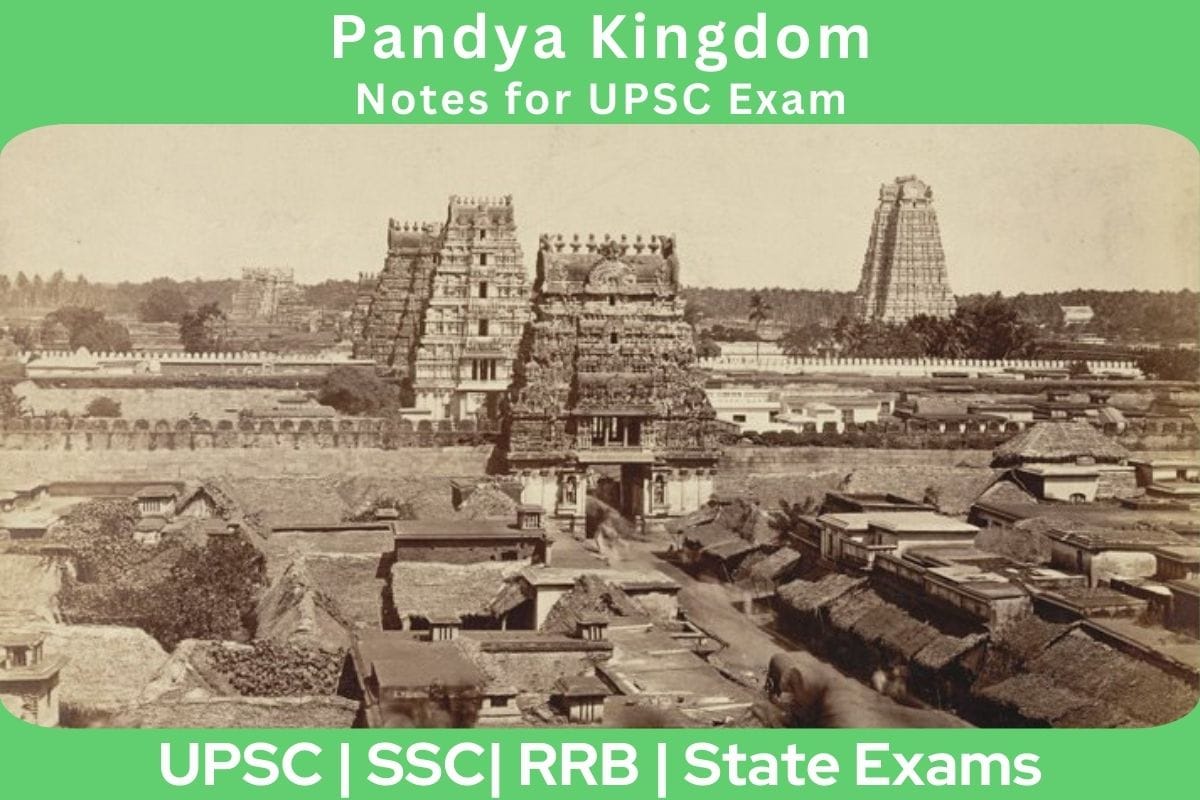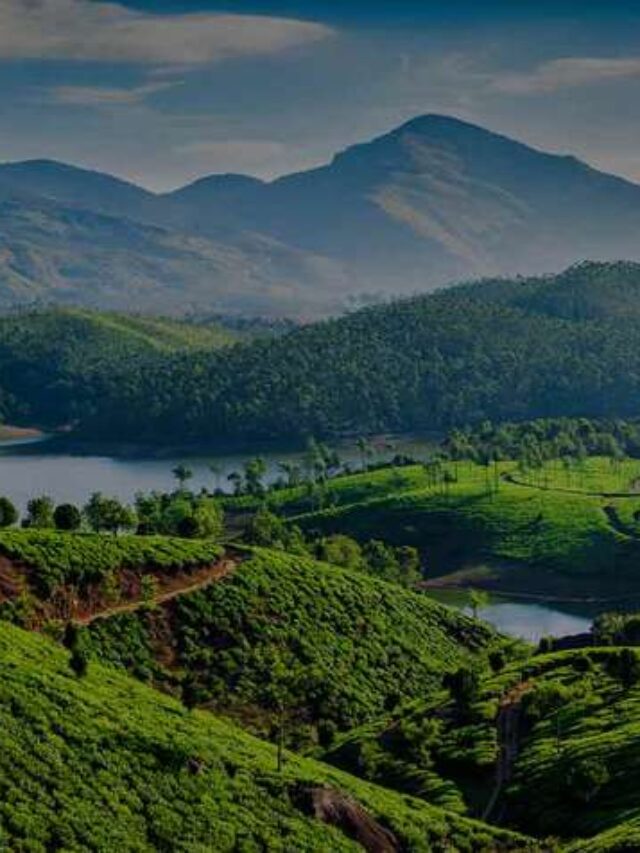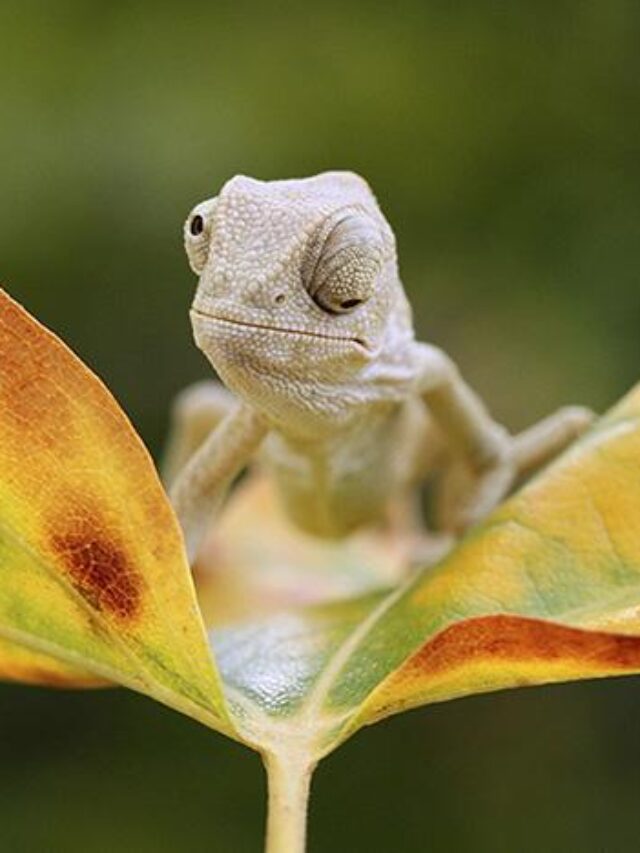
The Pandya Kingdom was one of the old Tamil ruling families in southern India, mostly in Tamil Nadu. They were part of the three big kingdoms during the Sangam age.
Overview Of The Pandyas
- The Pandya dynasty left a big mark on southern India’s culture and history, especially in Tamil-speaking areas.
- People remember them for what they added to literature, art, and buildings, and also for their early role in trade in the Indian subcontinent.
- Even today, the Pandya dynasty is a significant part of Tamil Nadu’s culture, and you can still see their influence in the old sites and temples in the region.
- The Pandya dynasty’s story is filled with a wealth of cultural and political history, split into three main periods: the Initial Pandyas, the Middle Pandyas, and the End Pandyas.
- They formed a trio of early kingdoms during the Sangam Age – Chera, Chola, Pandya – collectively called ‘Muvendar’ or the three crowns.
- The Cheras, Cholas, and Pandyas were in charge of the ports of Muziris (Muchiri), Korkai, and Kaveri, each for trading with the Graeco-Roman world.
Initial Pandyas (4th century BCE to 3rd century CE)
- The first Pandyas (around 4th century BCE to 3rd century CE) were the earliest rulers of the Pandya dynasty. We don’t know a lot about them because there aren’t many old records.
- People think they started ruling in the southern part of Tamil Nadu and mainly did trade with other places, even the Roman Empire.
- These early Pandyas were busy trading with the West, and old writers like Pliny the Elder (around 1st century CE), Strabo, Ptolemy, and the writer of the Periplus talked about it.
- The Sangam literature from the third century BCE and later, like Mathuraikkanci and other early Tamil writings such as Cilapatikaram, often mentioned the kings of the Pandyan Dynasty.
- They show up in old Sangam writings like “Purananuru” and “Akananuru,” telling us about their early days and how they lived.
Religion And Literature
- The early Pandyas were big supporters of Tamil literature, art, and culture. They helped shape Tamil classical music, dance, and stories.
- They also did a lot to spread Shaivism, a part of Hinduism. Madurai was their main city back then, and it’s still an important place in Tamil Nadu today.
Military Expeditions
- Just like many old ruling families, the early Pandyas had good and bad times. They had some tough times dealing with other strong neighbors like the Cholas and the Cheras.
- As time went on, the Pandya group got weaker, and by the 6th century CE, different families started taking charge of the area.
- Between the 6th and 14th centuries CE, the Medieval Pandyas had a more well-documented and important time in the dynasty’s history.
- In this period, the Pandya kingdom did really well, and they had control over a big part of southern India, including Tamil Nadu and Kerala.
Art And Architecture
- The Pandya leaders were famous for supporting Tamil literature, art, and building. They made sure to back Sangam poetry, which was a big deal in literature during this time.
- The Pandya dynasty started becoming more clear in history around the 4th to 5th centuries CE.
Important Kings
Some famous kings from that time include:
- Kadungon: He was well-known for beating the Kalabhras, who had taken over from the usual Tamil dynasties for a short time.
- Maravarman Avani Culamani: He ruled in the 7th century CE and helped bring Tamil literature back to life.
Medieval Pandyas
- In the early medieval days, the Pandya dynasty moved its main city to Korkai for a bit.
- Varagunavarman I: He was an important ruler, supporting literature and getting the famous Sanskrit play called “Mattavilasa Prahasana” made.
- In the Medieval times, the Pandyas had some problems with other dynasties like the Cholas and Cheras, fighting over who controlled what, which changed how powerful each group was.
- Between the 6th and 9th centuries CE, the Chalukyas of Badami, the Pallavas of Kanchi, and the Pandyas of Madurai were the big players in the politics of South India.
Later Pandyas
The Later Pandyas faced a time of trouble and instability from the 14th to the 16th centuries.
In this period, the Pandya kingdom had to deal with attacks from outside, especially from the Delhi Sultanate and the Vijayanagara Empire. This made their rule weaker and split up.
Important Kings
Some important rulers during this time were:
- Jatavarman Sundara Pandyan: He was a strong Pandya king in the 13th century, and he had conflicts with the Chola and Hoysala dynasties.
- Maravarman Kulasekara Pandyan: Another big ruler in the 13th century, his time in charge brought back power to the Pandya dynasty.
- Jatavarman Veerapandiyan: He fought against the Delhi Sultanate, especially Alauddin Khilji’s armies.
- The last important Pandya ruler, Varaguna Pandya III, got defeated by the Vijayanagara Empire in the 16th century. This basically ended the Pandya dynasty’s rule in Madurai.
Administration
The Pandya kingdom was split into different areas, and each area had a local leader known as “Palaiyakkarar” or “Poligar.”
These local leaders had jobs like collecting taxes, keeping the peace, and helping in the defense of the kingdom.
To run things smoothly, the Pandya dynasty had different people in charge, like:
- Yuvaraja: The future king in training, given jobs to learn how to rule.
- Manradiar: The main advisor to the king, helping with all kinds of ruling matters.
- Amatya: The person in charge of the money, handling the kingdom’s finances and collecting taxes.
- Duta: The go-between with other kingdoms, handling diplomatic relations.
- Maha Samanta: The leader of the army and defense efforts.
- Velir: Important people who held powerful positions in the kingdom.
The kingdom earned money through land revenue and taxes on crops. Landowners paid a part of their harvest as tax, and there were also taxes on trade.
To make sure things were fair, there was a justice system with judges called “Nyayakarar.” They used traditional rules (Dharmashastras) to settle arguments and keep the peace.
Art And Architecture
The Pandya leaders were big supporters of art, books, and building temples. They helped make amazing temples that became important for culture and religion in their areas.
In terms of other places, the Pandya dynasty talked with nearby kingdoms like the Cholas, Cheras, and Pallavas. They also worked with traders from faraway lands, especially the Roman Empire.
The way the Pandya dynasty built things is known for detailed temples and caves carved out of rocks. They mostly used the Dravidian style for temple building, like other South Indian dynasties. These temples are famous for big entrance towers, spacious halls with pillars, and detailed sculptures.
- Entrance Towers: Pandya temples have impressive entrance towers, called gopurams, with sculptures of gods, mythical creatures, and other designs. The Meenakshi Amman Temple in Madurai is well-known for its huge and fancy entrance towers.
- Main Shrine: In Pandya temples, the main shrine, called vimana, has a pyramidal or stepped tower (shikhara). Inside the vimana, there’s a sacred space (sanctum sanctorum) where the main deity’s idol is kept.
- Halls: Pandya temples also have big halls (mandapas) with carved pillars for rituals, gatherings, and sometimes performances.
- Carvings: The pillars in Pandya temples are famous for detailed carvings, showing scenes from Hindu stories and different deities. The sculptures show the artistic skill of the time.
Some famous Pandya temples include the Kallalagar temple in Alagar Koyil, the Meenakshi Temple in Madurai, and the Vaishnava Nambi and Thirukurungudivalli Nachiar temple.
- Rock-Cut Caves: The Pandya dynasty also made temples by carving into solid rock, creating chambers and shrines inside.
- Water Tanks: Many Pandya temples have big water tanks, used for rituals and festivals. The tanks often have steps leading down to the water.
The Pandya way of building things changed over time, with some regional differences. The later Nayak rulers added new styles to some temples.
Decline Of The Pandyas
The Pandya dynasty often fought with nearby dynasties, especially the Cholas and Cheras. These fights made the Pandya rulers and their territories weaker, causing them to lose land.
The Chola dynasty, led by rulers like Rajaraja Chola and Rajendra Chola, grew bigger and stronger, taking over South India and even parts of Southeast Asia. The Cholas won many battles against the Pandyas, making them the top rulers in the region.
Inside the Pandya family, there were fights and disagreements, and some leaders weren’t very strong. This infighting and problems with choosing the next leader made the dynasty weaker and less able to defend itself.
Other dynasties like the Chalukyas and Hoysalas from the Deccan region attacked the Pandyas, making things even more unstable. These attacks messed up how the Pandya dynasty was run.
South India also had trouble from outside, with invasions by foreign powers like the Rashtrakutas, the Delhi Sultanate, and later, European colonial powers. This changed how things worked in the region a lot.
When Muslim dynasties, especially the Delhi Sultanate, took control of South India, the Pandyas had to deal with new rulers and changes in how things were run. Also, new cultural and religious ideas, like Islam and the Bhakti and Sufi movements, changed how people lived.
The Pandyas were known for their trade and strong navy, but with new trade routes and European powers showing up, their influence in this area got smaller.
MCQs Test on Pandya Kingdom








Leave a Reply